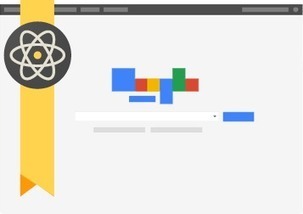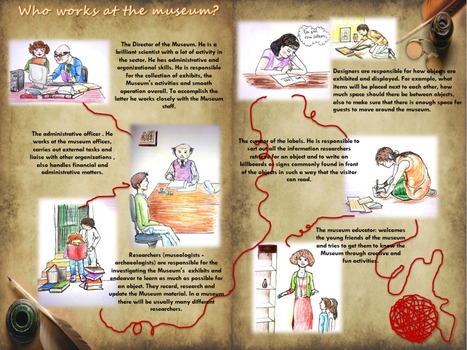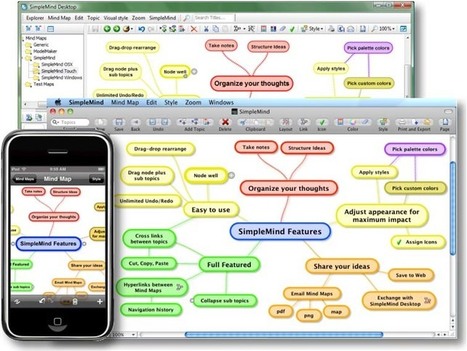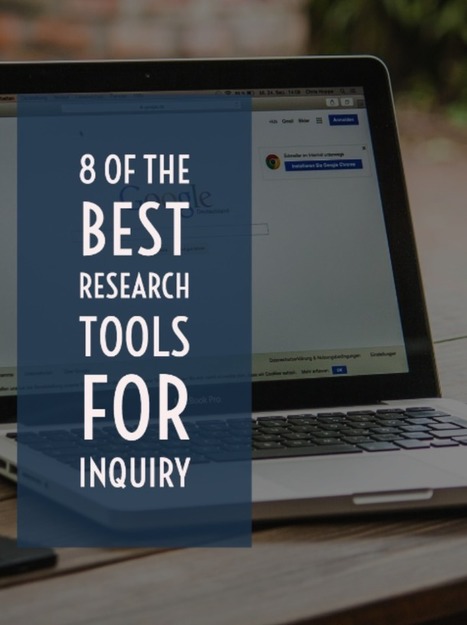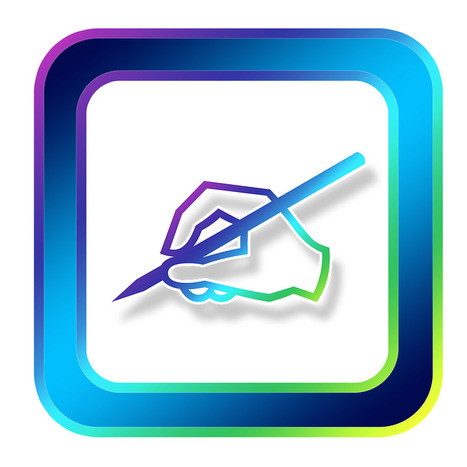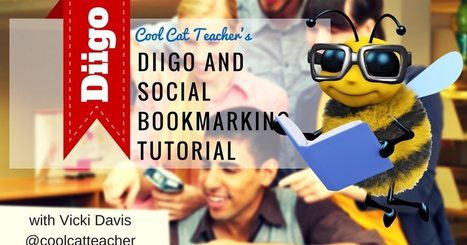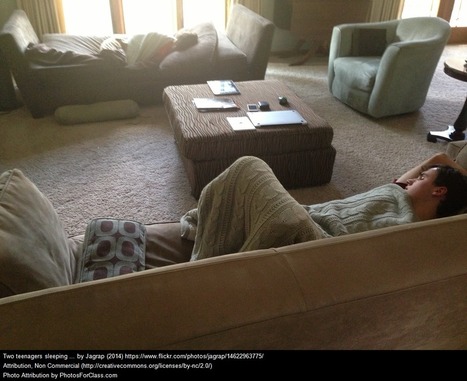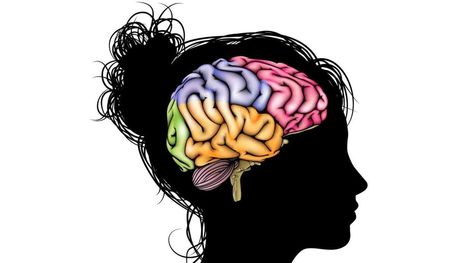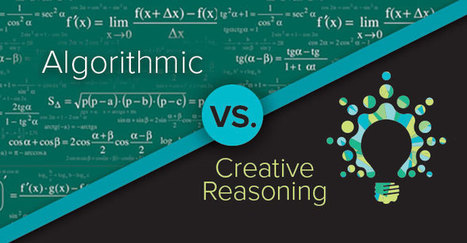 Your new post is loading...
 Your new post is loading...
Stand on the shoulders of giants. "Google Scholar provides a simple way to broadly search for scholarly literature. From one place, you can search across many disciplines and sources: articles, theses, books, abstracts and court opinions, from academic publishers, professional societies, online repositories, universities and other web sites. Google Scholar helps you find relevant work across the world of scholarly research. Features of Google Scholar - Search all scholarly literature from one convenient place
- Explore related works, citations, authors, and publications
- Locate the complete document through your library or on the web
- Keep up with recent developments in any area of research
- Check who's citing your publications, create a public author profile
How are documents ranked? "Google Scholar aims to rank documents the way researchers do, weighing the full text of each document, where it was published, who it was written by, as well as how often and how recently it has been cited in other scholarly literature."
Via Jesse
Free resource of educational web tools, 21st century skills, tips and tutorials on how teachers and students integrate technology into education
Via Tom D'Amico (@TDOttawa)
Currently, dramatic changes take place in terms of rapidly emerging modes of communication, technologies, increased cultural diversity, evolving workplaces cultures, new challenges for equitable education and the varying and changing identities of students everywhere. Bearing this in mind, this article draws on a design-based research study to argue of the need for museums to respond to global trends and fulfill their social and educational imperatives by investigating the potential of a particular pedagogical framework that is grounded in culturally inclusive pedagogical practices and characteristics of ubiquitous learning.
Via Andreas Christodoulou, THE OFFICIAL ANDREASCY, Dennis Swender
— Breaking up and spacing out study time over days or weeks can substantially boost how much of the material students retain, and for longer, compared to lumping everything into a single, nose-to-the-grindstone session.
— Varying the studying environment — by hitting the books in, say, a cafe or garden rather than only hunkering down in the library, or even by listening to different background music — can help reinforce and sharpen the memory of what you learn.
— A 15-minute break to go for a walk or trawl on social media isn’t necessarily wasteful procrastination. Distractions and interruptions can allow for mental “incubation” and flashes of insight — but only if you’ve been working at a problem for a while and get stuck, according to a 2009 research meta-analysis.
— Quizzing oneself on new material, such as by reciting it aloud from memory or trying to tell a friend about it, is a far more powerful way to master information than just re-reading it, according to work by researchers including Henry Roediger III and Jeffrey Karpicke. (Roediger has co-authored his own book, “Make It Stick: The Science of Successful Learning.”)
Learn more / En savoir plus / Mehr erfahren: https://gustmees.wordpress.com/2016/03/14/time-the-most-important-factor-neglected-in-education/ http://www.scoop.it/t/21st-century-learning-and-teaching/?tag=Brain
Via Gust MEES, Dr. Caroline B. Laurens
"Parents should worry less about the amount of time their children spend using smartphones, computers and playing video games because screen time is actually beneficial, the University of Oxford has concluded ..."
Via Leona Ungerer
"An annotated bibliography is an important part of any research document. Let's see how to create one with the help of Microsoft Word ..." ©
Via Leona Ungerer
The basic cognitive skills needed by previous generations are no longer enough. Students in the conceptual age must also master the higher levels of Bloom’s Taxonomy and Maslow’s hierarchy of needs, including creation, metacognition and self-actualization.
“It will require an upgrade to our curriculum, new instructional methods and materials, a new profile of a global graduate and an open mind,” say Smith, Chavez and Seaman.
For ideas about how to re-create your classroom for the conceptual age, including potential classroom setups, blended learning models to mix and match, and a curriculum design process, take a look at the infographic

|
Scooped by
Jim Lerman
|
|

|
Scooped by
Jim Lerman
|
There’s plenty of good research on study strategies that promote learning. It’s also well-documented that students don’t always use them. As most of us are well aware, procrastination gets in the way of learning. Cramming ends up being mostly a shoveling exercise—digging up details and dropping them into short term-memory. But there’s also evidence that students don’t know that some strategies do more for learning than others. And guess what? Neither do some faculty.
In his influential book Visible Learning, John Hattie presents his synthesis of over 800 meta-analysis papers of impacts upon student achievement. On a number of occasions teachers and teacher-librarians have told me that when they have advocated for inquiry learning approaches at their school, their senior administrators have not been supportive, citing Hattie’s research as showing that…
Via Mark E. Deschaine, PhD, Sarantis Chelmis
Social bookmarking is the modern student’s research tool. As I share in Reinventing Writing, research and pre-writing helps a student start strong. But how? Here’s your answer: Diigo has a fantastic new outlining tool! Before students write, have them turn in their outlines to you. Also, require that they rephrase their research sources at the point they […] Jim Lerman's insight: My bookmark management site of choice!
Via Sarah McElrath
This page is constantly evolving. The recent "fake news" explosion prompted me to put all resources in one spot for our students
Via Tom D'Amico (@TDOttawa)
Free resource of educational web tools, 21st century skills, tips and tutorials on how teachers and students integrate technology into education
Via Tom D'Amico (@TDOttawa)
Here are new additions to The Best Resources For Helping Teens Learn About The Importance Of Sleep (you can also find ideas there on how I use this kind of research in lessons): Starting school lat…
Via Tom D'Amico (@TDOttawa) , Yashy Tohsaku
“[Adolescence is] a stage of life when we can really thrive, but we need to take advantage of the opportunity,” said Temple University neuroscientist Laurence Steinberg at a Learning and the Brain conference in Boston. Steinberg has spent his career studying how the adolescent brain develops and believes there is a fundamental disconnect between the popular characterizations of adolescents and what’s really going on in their brains.
Because the brain is still developing during adolescence, it has incredible plasticity. It’s akin to the first five years of life, when a child’s brain is growing and developing new pathways all the time in response to experiences. Adult brains are somewhat plastic as well — otherwise they wouldn’t be able to learn new things — but “brain plasticity in adulthood involves minor changes to existing circuits, not the wholesale development of new ones or elimination of others,” Steinberg said. The adolescent brain is exquisitely sensitive to experience,” Steinberg said. “It is like the recording device is turned up to a different level of sensitivity.” That’s why humans tend to remember even the most mundane events from adolescence much better than even important events that took place later in life. It also means adolescence could be an extremely important window for learning that sticks. Steinberg notes this window is also lengthening as scientists observe the onset of puberty happening earlier and young people taking on adult roles later in life. Between these two factors, one biological and one social, adolescence researchers now generally say the period lasts 15 years between the ages of 10 and 25. Learn more / En savoir plus / Mehr erfahren: http://www.scoop.it/t/21st-century-learning-and-teaching/?tag=Brain Use #Andragogy UP from 11 years: https://gustmees.wordpress.com/2015/05/13/andragogy-adult-teaching-how-to-teach-ict/
Via Gust MEES, John Rudkin

|
Scooped by
Jim Lerman
|
"Last year, Dr. Karlsson Wirebring and fellow researchers published a study that supports what many educators and parents have already suspected: students learn better when they figure things out on their own, as compared to being told what to do."
Via Tom D'Amico (@TDOttawa)
These picks will show students how to go beyond Google to find credible, usable scholarly resources. This list collects the top-rated tools for collecting, annotating, and citing trusted resources ready-made for research papers and projects.
Via Tom D'Amico (@TDOttawa)
Looking for tools and strategies for effective assessment in project-based learning? To support you, we've assembled this guide to helpful resources from Edutopia and beyond.
Via Becky Roehrs, Les Howard
|



 Your new post is loading...
Your new post is loading...

